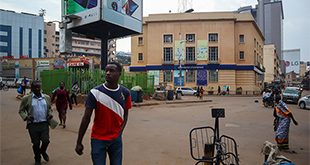
When selecting the best performing schools and districts, it is only division 1, 2, 3 and 4, which are the basis for one to join secondary school that are considered. A school might have a high number of students that passed in division one but if it gets any in U, its chances of joining the league of stellar performers are diminished.
Over all, schools registered better performance compared to last year as 87% of the candidates passed compared to 86.2% in the previous year.
A total of 622,299 candidates sat for the exams last year and of these 63400 passed in division one and 251,787 in division two. This presents an improvement from last year when 51427 of the 600,868 candidates who sat passed in division one and 234,537 passed in division two. In terms of distinction performance, English rose from 10% to 11.5%, Social Studies (SST) improved from 5.8% to 10.3% while Mathematics rose from 3.9% to 4.5%. Science dropped by 7%. According to UNEB, a candidate is deemed to have passed if they obtained division 1, 2, 3 or 4.
When she was officiating at the release of results function on Jan.12, First lady Janet Museveni who doubles as the Education Minister seemed to push Fort Portal’s line encouraging parents to get involved in their children’s education.
Museveni said UPE should be recognized for increasing access with PLE candidature increasing when the policy was initiated. She also re-echoed her call for parents to provide the basics despite the backlash she previously received on social media when she recommended pupils to have flasks that parents should provide their children with lunch.
“Government will not provide everything “, she told journalists.
But education expert like Mary Gorretti Nakabugo, the National Director for Uwezo, a project of Twaweza, an organization that does periodical assessment on learning, says instead of focusing on solutions which can only be afforded by the few, the government should focus on improving the tested education service delivery indicators.
She says this is the only way government is going to achieve good results for everyone irrespective of the region or whether a child attends an urban or rural school. The Economic Policy Research Center (EPRC) lists indicators as teacher presence, inspection, Pupil to teacher ratio, teacher quality, classrooms and other infrastructure.
Nakabugo says PLE results have emphasized what their annual Uwezo assessment reports have been highlighting whereby where they found teacher to pupils and classroom to pupil ratios saddening, they’ve been the worst performing in the exams.
The 10 least performing districts are from Eastern Uganda with Serere being the worst performing. Pupil Teacher ratio there is at 56:1 whereas in Central and Western Uganda who were the best performers the ratio is 36:1 and 41:1 respectively. The north where pupils usually compete with those from the East at the bottom of the rankings stands at 58:1. In terms of pupil to classroom ratio, the figures are still not different, Uwezo places the East and the North at 104:1, Central at 68:1 and west at 72:1.
In addition to fixing teacher shortage issues, Nakabugo says, extra things teachers get from schools such as lunch and continuous training should also be considered. She also emphasized that children need to get a better foundation through Early Childhood Development (ECD).
In a Jan.16 interview, another education expert, Fagil Mande, said that the earlier the programme to popularize early childhood education throughout the country is implemented the better. According to him if the child’s first five years are not invested in, then they will not perform well in future exams and even at the work place. To him, performance in national exams is a widely accepted indicator of education standards in any country.
Alituha also calls for empowering of the head teacher to be in more control of the school. Issues of teacher absenteeism, he says, arise because most head teachers don’t know that standing orders give them authority to take corrective action.
Meanwhile, in 2016, analysis by gender indicated that 311777 (48.7) boys were registered compared to 329190 (51.3%) girls, indicating that more girls than boys completed the Primary Education cycle. However, 1886 candidates will wait a little longer to see their results until the board finishes its investigations for they are thought to have been involved in examination malpractices.
This number doubles that of last year when results of 909 were withheld. UNEB Executive Secretary Daniel Nockrach Odong says this is caused by the fact that teachers never do enough to prepare pupils for exams and fidget at the last moment.
In addition to leaking papers to pupils ahead of the exam, the common malpractice now according to him is candidates being given assistance by third parties inside examination rooms.
****
editor@independent.co.ug
 The Independent Uganda: You get the Truth we Pay the Price
The Independent Uganda: You get the Truth we Pay the Price


